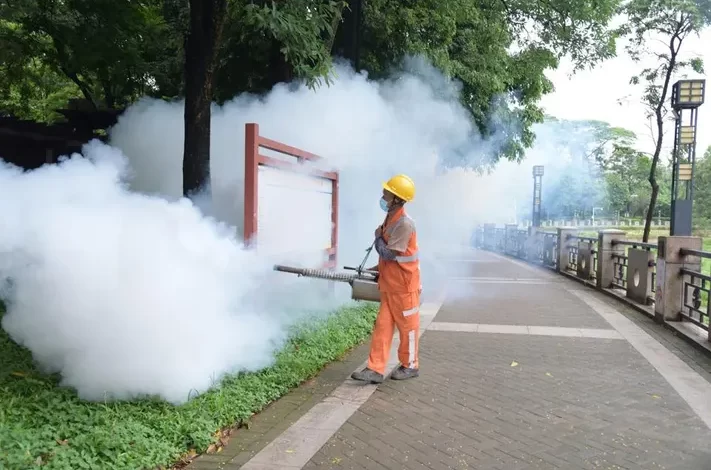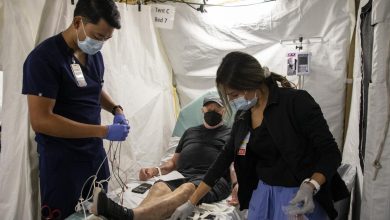Chikungunya Chaos in China: Is This the Next Global Health Emergency?

In recent months, a wave of concern has rippled through global health corridors and media outlets: a sudden increase in chikungunya virus (CHIKV) infections in China that hints at broader regional transmission. Although chikungunya has long been known in parts of Africa, Asia, and the Indian subcontinent, its appearance in mainland China—particularly in areas previously free from endemic transmission—raises pressing questions about its potential to spiral into a full-scale global health emergency. The nature of chikungunya, the evolving Chinese situation, its drivers, the risks of widespread spread, and what the world should do to prevent the next pandemic.
Understanding Chikungunya
Chikungunya (pronounced “chick-un-GUN-ya”) is an arbovirus—an arthropod-borne virus—transmitted primarily through the bites of infected Aedes mosquitoes (notably Aedes aegypti and Aedes albopictus). First identified in Tanzania in 1952, the virus causes acute febrile illness characterized by severe joint pain, rash, headache, and muscle pain. While rarely fatal, the disease often causes debilitating symptoms that can linger for weeks or even months, especially in older adults.
Over recent decades, chikungunya has reemerged in various regions, fueled partly by global travel and urbanization. Outbreaks have been documented in Africa, Southeast Asia, the Indian subcontinent, the Caribbean, and the Americas, often with explosive transmission and significant health burdens.
Key Features
- Incubation period: Typically 2–12 days after a mosquito bite.
- Symptoms: High fever, intense joint pain (arthralgia), rash. Up to half of those infected remain asymptomatic, but many suffer prolonged joint pain lasting months.
- Mortality: Low (<0.1%), but those who die often do so from complications or in the context of comorbidities.
- Chronic effects: Up to 60% of symptomatic patients may experience persistent arthralgia or arthritis-like symptoms for months.
The Emerging Situation in China
Recent Cases and Geographic Spread
Just this year (2025), multiple provinces in southern and central China have reported confirmed chikungunya cases—some locally acquired, others imported by travelers returning from endemic regions. While individual travel-related cases are not unprecedented, the detection of clusters of locally transmitted infections in historically non-endemic Chinese provinces has raised red flags among public health officials both in China and globally.
For instance, reports indicate several dozen confirmed cases in provinces like Guangdong and Yunnan, areas with favorable climates and Aedes mosquito populations. Some urban centers have even recorded secondary cases—meaning the virus has been picked up within local mosquito populations and transmitted from person to person via mosquitoes rather than directly imported.
Surveillance and Diagnostic Advances
One crucial factor behind this heightened awareness is the strengthening of China’s surveillance and diagnostic capacities. In the wake of COVID-19 and other global health threats like SARS and avian flu, China has massively upgraded its CDC network, laboratory capability, and disease monitoring in border and travel hubs.
These systems may now be picking up cases that would previously have flown under the radar. While this is good news for public health transparency, it does not diminish the real risk: mosquitoes are a proven vector, and Aedes albopictus—the Asian tiger mosquito—is already established across many parts of China, including temperate regions.
What Are the Drivers of Potential Expansion?
1. Climate and Seasonality
- Aedes albopictus* thrives in warmer, humid climates, but it’s notably adaptable to more temperate zones. With climate change and milder winters, its geographic range has been expanding northward and inland. China’s monsoon season—with high humidity, temperatures in the 25–30 °C range, and abundant standing water—creates ideal conditions for mosquito breeding and virus transmission.
2. Urbanization and Population Density
Many Chinese cities are densely populated, with high population mobility. Urban neighborhoods—particularly lower-income areas with inadequate waste management or water drainage—are hotspots for mosquito breeding. It doesn’t take much for a couple of infected travelers to spark local outbreaks.
3. International Travel and Trade
China remains deeply connected to regions where chikungunya is endemic or epidemic—especially Southeast Asia, South Asia, and parts of Africa. International travelers or migrant workers returning home can unknowingly introduce the virus. Even short-term or asymptomatic infections can contribute to silent seeding of local transmission.
4. Public Awareness and Healthcare Response
While medical infrastructure is robust in many urban Chinese centers, awareness among both clinicians and the public about chikungunya remains limited compared to diseases like dengue or COVID-19. Initial cases—especially during peak dengue season—could be misdiagnosed or attributed to more familiar febrile illnesses. Delays in recognition increase the likelihood of further spread before containment kicks in.
Assessing the Risk: Could This Become a Global Health Emergency?
To evaluate whether chikungunya in China holds potential to evolve into more widespread global crisis, it’s helpful to consider analogies like the 2013–2016 Zika epidemic or the rapid spread of dengue serotypes in previously unaffected regions. Several factors matter:
Transmission Potential
- Mosquito ecology: Aedes albopictus is widespread across Asia (including China), parts of Europe, and even North America. Its year-round establishment in some regions means any local outbreak—even if short-lived—has the potential to leap across borders.
- Seasonality windows: While mosquito activity drops during prolonged cold seasons, China’s southern provinces experience relatively short winters, and mild weather may persist longer under current climate trajectories.
Clinical Burden
- Though chikungunya fatality is low, the morbidity—and economic impact—can be substantial. Individuals experiencing prolonged joint pain may be unable to work or care for families. Large outbreaks can strain healthcare systems, especially during seasonal overlaps with dengue or influenza.
Global Mobility
- Spread of chikungunya beyond China would likely hinge on travel patterns. Cities with heavy international connections could act as stepping-stones: infected travelers departing during the viremic phase (when they carry the virus in their blood) might spark new foci in their destination.
Preparedness and Response Capacity
- The speed and transparency of reporting, effectiveness of vector control, and public awareness will be critical. A rapid and coordinated response—e.g., emergency mosquito control, public advisories, diagnostic testing, isolation advice—can contain outbreaks before wider importation occurs.
By comparison with diseases like SARS in 2003 or COVID-19 in 2019, chikungunya is far less lethal and far easier to control. But it is far more transmissible via mosquitoes, and complications such as persistent joint pain can generate societal and economic costs. If left unchecked, or if a novel strain emerges with atypical virulence, global risk may rise.
What Are Health Authorities Doing—and Should Do?
Chinese Public Health Measures
China’s National Health Commission (NHC) and provincial CDC offices are reportedly:
- Enhancing disease surveillance, especially in clinics and hospitals where patients present with fever and arthralgia.
- Rolling out rapid RT-PCR testing for CHIKV in major laboratories, especially in southern provinces.
- Launching community-level vector control efforts: insecticide fogging in hotspot neighborhoods, elimination of standing water, public warnings about mosquito bites.
- Issuing travel advisories and health alerts, both domestically and internationally—for travelers in or leaving affected zones.
While these measures have historical precedent yet are encouraging, sustained effort throughout the mosquito season—and beyond—is essential. Once attention drifts, surveillance gaps and mosquito resurgence can pave the way for recurrence.
Global Health Preparedness
The World Health Organization (WHO) typically monitors arboviral threats including chikungunya, dengue, Zika, and yellow fever. If clusters in China are confirmed and show sustained local transmission beyond expected levels, WHO may issue a Disease Outbreak News (DON) alert. Such alerts prompt international coordination and urge countries to step up their own surveillance.
Meanwhile, nations with Aedes mosquitoes—including many in Europe, the Americas, and Asia-Pacific—should review their preparedness plans for chikungunya:
- Clinician awareness: Train doctors to include CHIKV in differential diagnoses for febrile illness with joint pain, especially in patients with recent travel to China or Southeast Asia.
- Laboratory readiness: Ensure capabilities for IgM serology or RT-PCR testing for chikungunya in suspected cases.
- Vector control: Reinforce programs to eliminate Aedes breeding grounds and support community education campaigns.
- Traveler advisories: Inform outbound and inbound travelers of risks, protective measures (e.g., long sleeves, repellents, screens), and symptom monitoring.
The Global Context: Overlapping Arboviral Threats
Chikungunya is part of a broader family of arboviruses with significant global reach. The list includes:
- Dengue virus: Responsible for hundreds of millions of infections annually, and a well-known concern in China, Southeast Asia, Latin America, and parts of Africa.
- Zika virus: Famed for its explosive outbreak in 2015–2016, particularly for causing birth defects when pregnant women are infected. Though currently at low case levels, it remains endemic in many regions.
- Yellow fever: Uncommon in Asia, but a perennial threat in parts of Africa and South America.
- West Nile virus, Japanese encephalitis, Rift Valley fever: Regional in scope but capable of crossing borders, especially via migratory birds or livestock transport.
Often these viruses cocirculate. Co-infections or misdiagnoses are possible. Indeed, early chikungunya cases in China could be mistaken for dengue—if clinicians don’t suspect both.
In this context, obvious questions arise:
- Could chikungunya and dengue co-infect individuals, leading to heightened disease severity?
- Could existing immunity to dengue or other arboviruses cross-react—or even offer partial protection? The immunology remains incompletely understood, but cross-reactivity in serological testing is well documented.
- Could new surveillance and control methods developed for COVID-19—like waste surveillance or broad pathogen screening in travelers’ clinics—be adapted for arboviral threats?
What If China Sees a Major Outbreak? Global Spillover Risks
While current reports are limited to a few dozen cases, let’s briefly consider a hypothetical but plausible worst-case scenario: a sustained outbreak in multiple southern provinces lasting several months. What might follow?
1. Regional Spread
Migrants, tourists, or business travelers could carry the virus to neighboring countries—Laos, Vietnam, Myanmar, India—where Aedes mosquitoes are abundant and populations often immunologically naive to this particular CHIKV strain. Those countries could in turn launch outbreaks.
2. International Travel Spread
Cities across Asia, Africa, the Middle East, Europe, and North America with direct flights to Chinese cities might receive travelers during their viremic period (when the virus is in their bloodstream). For example:
- A traveler from Guangzhou arriving in Milan could unknowingly introduce CHIKV to European Aedes albopictus-inhabiting areas—a phenomenon seen before with dengue.
- Destinations in Africa or the Middle East might act as staging points for further dispersion, especially if vector control remains inadequate.
3. Demanding a Coordinated Response
If such expansion occurs, coordinated action across governments, WHO, and regional bodies (e.g., ASEAN, SAARC, African Union) becomes essential. Responses could include:
- Emergency funding for rapid vector control and clinical care
- Cross-border surveillance information-sharing
- Messaging coordinated in multiple languages
- Reassessment of travel policies—though historically, temporary travel restrictions have limited impact and carry political and economic cost.
Why Chikungunya Shocks—but Doesn’t Terrify
It’s important to contextualize the global risks realistically. Unlike COVID-19—a respiratory virus transmitted with startling ease—chikungunya requires a mosquito vector to spread person-to-person. That dependency limits its potential speed and scale. However:
- Endemic Spread is Dangerous: In suitable climates, the virus can establish itself and trigger seasonal or recurring epidemics—as seen in India or Indonesia.
- Economic Impact Matters: When hundreds of thousands fall ill simultaneously—in workplaces, markets, health facilities—the capacity to deliver basic services can be strained.
- Long-Term Disability Creates Burden: Many survivors experience prolonged joint pain or arthritis-like illness, which can interfere with productivity and quality of life.
- Vaccine Development Is Ongoing but Not Yet Widespread: Several candidate chikungunya vaccines are in clinical trials, but none are yet widely licensed or mass-produced. That makes prevention heavily reliant on vector control and personal protection.
Final Analysis: Is China’s Chikungunya Event the Next Global Health Emergency?
At present, the situation in China—though concerning—does not yet rise to the level of a global health emergency. There is no evidence (as of August 2025) of widespread or explosive outbreaks; only sporadic cases and localized clusters. Public health infrastructure in China is alert and responsive, and the window for control remains open.
However, the risk potential is real. As several factors converge—climate change, international travel, urban density—a naïve population with abundant mosquito vectors can become a breeding ground for sustained transmission. If unchecked, persistence of CHIKV in parts of China could serve as a hub for regional or even more international spread.
To stay ahead of the curve, authorities should be ready to:
- Maintain heightened surveillance and reporting
- Mobilize vector control rapidly in outbreak zones
- Educate healthcare providers and the public about risks and prevention
- Coordinate closely with WHO and regional partners
- Monitor vaccine trials and prepare for eventual deployment




